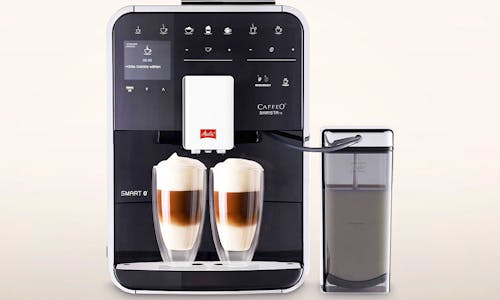We test out Barclaycard’s newly launched bPay contactless payment products to see how they stand up to new rivals like Apple Pay.
Contactless payments are fast becoming a big deal and across Europe in the last 12 months there have been more than one billion transactions using the technology, collectively totalling more than £8.95 billion, if the stats Visa supplied to TechWeekEurope are anything to go by.
With this in mind it should come as little surprise that 2015 is the year of contactless payments with Apple Pay, Samsung Pay, Android Pay and of course bPay all vying to replace the card in your wallet.

In the UK Barclaycard’s new bPay product family has actually beaten Apple Pay to the punch, launching over a week in advance and it follows on from an existing lineage of contactless payment technologies the bank had already entered into the market with previously.
The 2015 bPay lineup consists of the sticker – which can be attached to pretty much any flat surface, like the inside of a wallet or the back of a mobile phone, the fob – which comes complete with a keychain for minimal bulk and a wristband, if you want your contactless payment method always on-hand.
The most affordable option is the sticker, available in charcoal or light grey and priced at £14.99. Next up is the fob, at £19.99, which can only be had in charcoal (although there are silver accents). And finally the priciest, but in our opinion the coolest option – the wristband will set you back £24.99 and comes in either colourway.
If it’s not obvious, bPay doesn’t require a smartphone, or indeed power to work, which for some will serve as a big bonus. The fob and wristband house a removable contactless payment chip that you register to your card, but management does take place through a mobile app, provided you have an iOS or Android device.
The app itself features a simple setup process, admittedly a little lengthier than adding a card to Apple Pay, but nonetheless, it takes a few minutes at best. Setup includes adding funds to your bPay account, which similarly to EE’s Cash on Tap service, doesn’t draw funds directly from your debit account, but rather holds funds in its own ‘wallet’ which can be topped up via the app. Auto-top-up is also an option, with the default value of £30 being added at a time when funds run low.
Just as with Apple Pay, bPay currently limits contactless transactions to £20 at a time, but this is expected to increase as will the cap on Apple Pay. What’s more, the service maxes-out how much you can add to an account in a day at £200 and no more than £400 can be spent in the same time frame.
From unboxing, to registering and purchasing an item with bPay, the whole experience was rapid and convenient. The wristband and fob aren’t built out of the strongest materials; namely plastic and rubber and unlike other wearables we’re doubtful of the wristband’s water-resisting chops too.
Despite this, bPay offers an unquestionably simple way to bring the convenience of contactless payments into your life and for the time being, it serves as a solid alternative for those without one of Apple’s rather expensive mobile products.

Its biggest challenge is yet to come however, as aforementioned rivals like Samsung and Android Pay join the fray and spread the technology to the thousands of smartphone users who didn’t pick Apple to begin with.
For the curious considering laying down cash for one of these bPay products, despite being creations of Barclaycard, it’s worth noting that bPay will work with most Visa/MasterCard credit/debit cards tied to a UK billing address and locations where bPay is supported are available from the source link.



















Leave a Reply